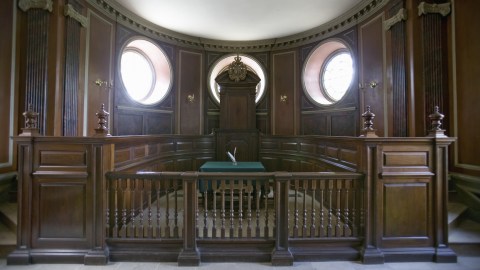Divorce Wasn’t Considered Taboo Among 17th Century, New World Puritans

The second divorce in America took place 372 years ago on January 5, 1643. Laura Clark from the Smithsonian reports that the early Puritan settlers of New England weren’t such sticklers when it came to divorce all those years ago.
Records indicate that in the 1600s, around one divorce was filed each year in the Massachusetts and Connecticut colonies. Over the years, though, that number increased likely as more settlers came in.
The divorce was over a dispute between Denis and Anne Clarke on the grounds of bigamy. Denis was said to be living with another woman that was not his wife and by whom he had two children. Quite the complication when he also had two kids with Anne who he had no intention of returning to. The Court of Assistants of the Colony of the Massachusetts Bay, seeing no chance of reconciliation between the pair, granted the divorce. Unfortunately, there’s no record on how Anne fared in the coming years—now being a single mother and all.
The woman in the first divorce of the New World fared much better. Mr. and Mrs. James Luxford divorced on December 3, 1639 on the grounds that he was married to two women at the same time. To the wife that he most recently married, he was to forfeit all his accounts and possessions, fined, and thrown in the stocks.
In Peter Charles Hoffer’s book, Law and People in Colonial America, he argues that marriage among the first New England settlers was considered more of a civil contract than it was in England. This lessened the social stigma that would later come with divorce. He writes:
“Colonial marriage and divorce law was slightly more open to the needs of a mobile, heterogeneous, opportunistic, fluid society than was English marriage and divorce law. In America, as in England before the Marriage Act of 1753, a man and a woman could enter into marriage by mutual consent and open cohabitation.”
He notes that Puritans would also attempt to have the two parties to reconcile before granting divorce, but if their efforts failed a court would hand down the divorce.
Read more at Smithsonian
Photo Credit: Shutterstock





